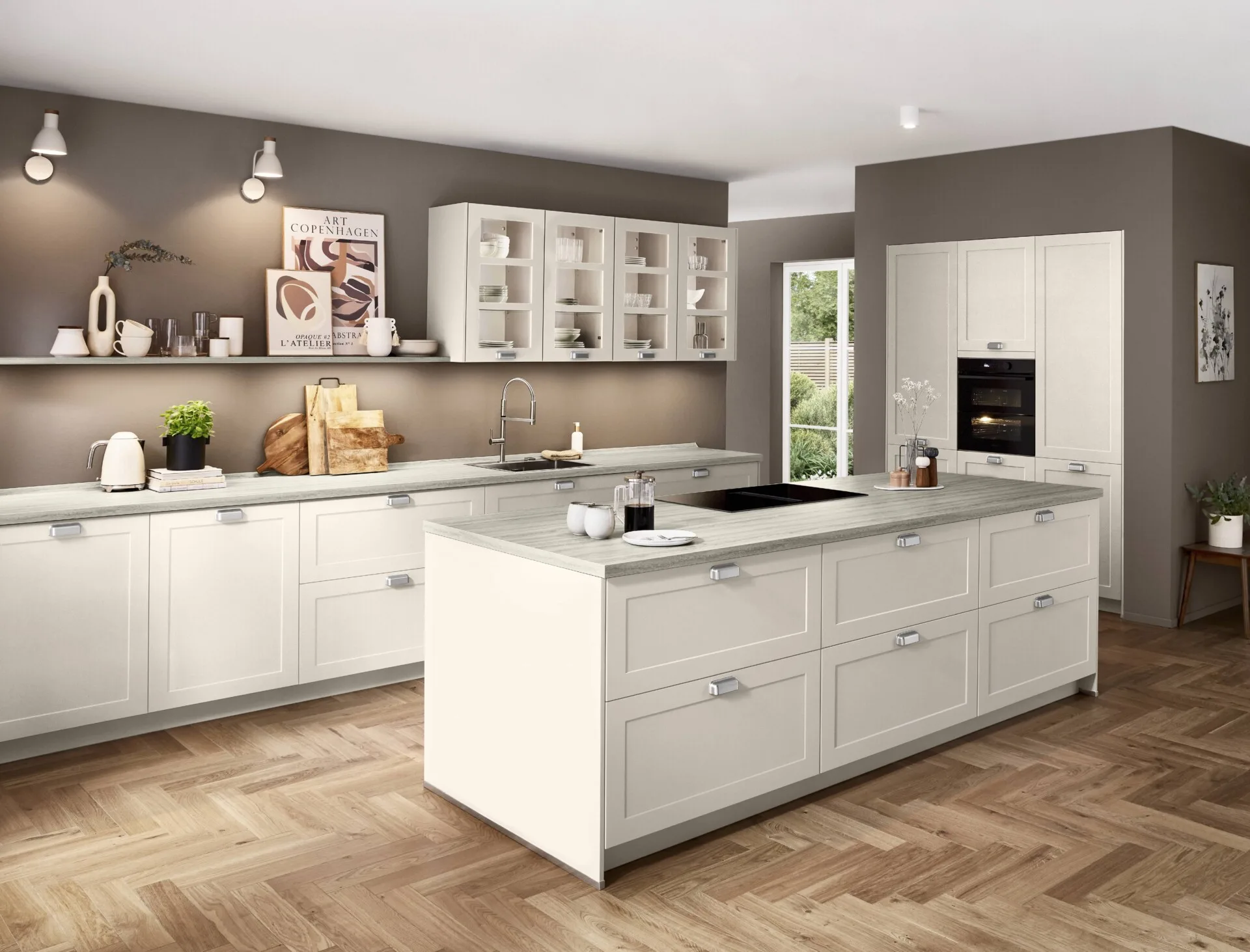When designing or renovating a kitchen, choosing the materials for the cabinet fronts is one of the most important decisions. Two of the most popular and sought-after options on the market are lacquered finish and the laminated finishBoth offer attractive aesthetics and diverse functionality, but they have key differences in durability, maintenance, price, and aesthetic appeal. For vacation rental owners and managers, understanding these differences is essential to selecting the option that best suits their intensive use, aesthetic, and budget needs.
This article will guide you through the features, advantages, and disadvantages of each type of finish, so you can make an informed decision and create a kitchen that's both functional and aesthetically appealing to your guests.
A lacquer finish refers to a painting process applied to MDF (medium-density fiberboard). This process, usually performed in several layers, provides a smooth, uniform, high-gloss or matte finish, depending on preference. lacquered kitchen It is synonymous with sophistication and modernity.
A laminate finish is created by layering paper or synthetic material impregnated with resins and pressed at high pressure and temperature onto a board (usually particleboard or MDF). The result is a tough, durable, and versatile surface capable of imitating a wide range of textures and colors, from wood to stone to smooth designs. Modern kitchens They often incorporate this material for its practicality.
The laminate It is generally superior in resistance to scratches, dents, and discoloration, making it a more robust option for frequently used kitchens, such as those in vacation rentals.
The lacquered It offers an elegance and high-end finish that laminate, while versatile, rarely matches, especially in high-gloss finishes. However, laminate offers a range of textures and finishes (such as woodgrain) that can add warmth.
Both are relatively easy to clean, but the laminate It's more forgiving of daily use and minor abrasions. Lacquered kitchens, especially gloss ones, can more easily show fingerprints and scratches.
The kitchens laminated They are usually cheaper than lacquered, making them a cost-effective option for tight budgets or for projects where the goal is to optimize investment without excessively sacrificing quality and durability.

Repairs in Laminados damaged parts are complicated and often require complete replacement of the part. lacqueredIn certain cases, they can be sanded and repainted, especially if the damage is superficial.
Regardless of the finish chosen, it is crucial to opt for high-quality hardware and good interior design. For apartment kitchens, for example, kitchens for apartments must be functional and durable. Solutions such as concealed handles (e.g., the Gola or nail puller) or systems of handleless kitchens They can improve both aesthetics and practicality by minimizing elements that can snag or become damaged.
The choice between a lacquered and laminate kitchen will depend on your budget, expected usage, desired design style, and your tolerance for damage and repair costs. While lacquer offers superior aesthetics and a luxurious finish, laminate stands out for its durability, strength, and excellent value, often making it the most sensible choice for high-traffic environments such as holiday accommodations. Weigh your priorities carefully to make the decision that best benefits your property and your guests.